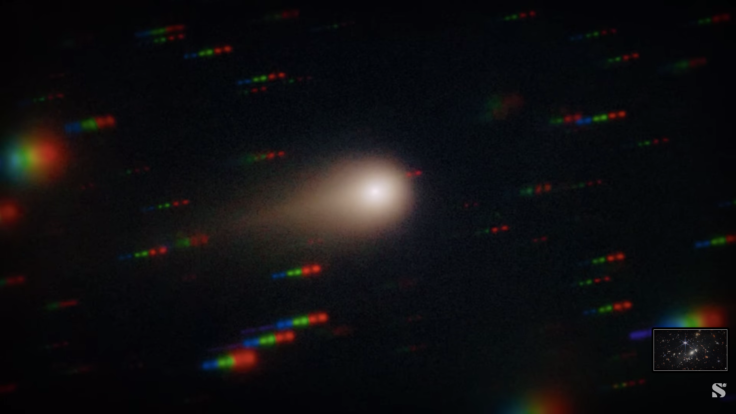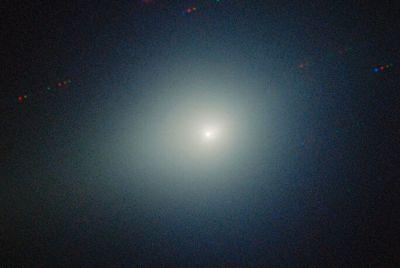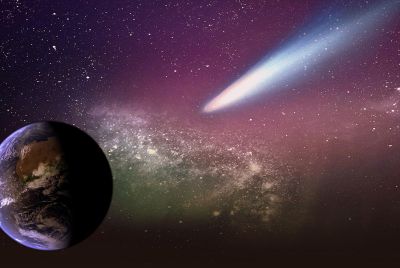3I/ATLAS Accelerates on Its Own — Avi Loeb Says an 'Engine' Can't Be Ruled Out
Astronomers detected slight unexplained acceleration in interstellar object 3I/ATLAS, challenging standard comet models

Astronomers observing the interstellar object 3I/ATLAS say it is showing unexpected movement as it travels through the Solar System. The latest measurements reveal a slight but measurable acceleration that does not align easily with standard models of comet behaviour.
The finding, first reported by NASA engineers and later analysed by international research teams, has drawn both interest and caution across the astronomy community. Some researchers believe the change can be explained by natural outgassing, while others say further evidence is needed to confirm the source of the motion.
Among those studying the anomaly is Harvard astrophysicist Avi Loeb. He argues that although a natural cause remains the most likely explanation, the data do not yet rule out the possibility of a technological one, such as a form of internal propulsion.
What the data shows
A recent study co-authored by Loeb and his colleagues analysed more than 4,000 ground-based observations of 3I/ATLAS between May and September 2025. The team derived an upper limit on any non-gravitational acceleration, meaning any deviation from purely gravitational motion, of roughly 3 × 10⁻¹⁰ astronomical units per day squared.
This suggests that if the object is expelling gas or dust, as comets often do, it must be either very massive or losing material in a balanced way that produces almost no detectable thrust. From these results, researchers estimate a minimum mass of about 3.3 × 10¹⁶ grams and a diameter of at least five kilometres, which is unusually large for an interstellar object.
That limited but intriguing acceleration is the basis for Loeb's more speculative interpretation.
Loeb's Argument
Writing on his research blog, Loeb has said the small residual acceleration does not eliminate the idea of propulsion. If 3I/ATLAS is as massive as estimated, even moderate thrust from gas release or an internal mechanism might be too subtle to detect.
He has suggested that perihelion, the point where the object passes closest to the Sun, could be when a craft might adjust its speed or orientation. Loeb also speculated that smaller fragments could be released, or that excess heat might indicate an internal energy source. His position is not that 3I/ATLAS is an alien probe, but that science should remain open to possibilities until firm evidence emerges.
3I/Atlas appears to have accelerated during its perihelion with the sun either due to outgassing or an artificial propulsion system as Avi Loeb explained in his latest paper. Regarding the latter possibility, he writes:
— Michael Salla (@MichaelSalla) October 31, 2025
"Alternatively, the non-gravitational acceleration might…
3i/ATLAS: CHANGE TO COLOR BLUE A SURPRISE , could be engine or artificial light https://t.co/YDCw0aacjc pic.twitter.com/f0b7GTZIih
— GIGO: Antonym (@KozmikKwest) October 31, 2025
Latest article from Avi Loeb:
— Anomalous_User²🗽🛸 (@Bot1397642) October 31, 2025
👀
First Evidence for a Non-Gravitational Acceleration of 3I/ATLAS at Perihelion – https://t.co/nygbk4aX40
"Alternatively, the non-gravitational acceleration might be the technological signature of an internal engine. This might also explain the…
Why Astronomers Remain Cautious
Many scientists favour a more conservative view. Observations show 3I/ATLAS displaying the typical signs of a comet, including a dust coma, changes in its tail near the Sun and traces of volatile gases such as carbon dioxide. These features, they argue, suggest a natural origin.
Sceptics also note that the acceleration detected so far is only an upper bound rather than a confirmed measurement, and that the object's large mass could mask any minor propulsive effect. Most institutions, including NASA and the European Space Agency, continue to classify 3I/ATLAS as a natural interstellar comet undergoing standard outgassing.
3I/ATLAS will make its closest approach to Earth in December, offering telescopes another opportunity to measure whether its path continues to deviate from predictions. Whether the anomaly arises from physics or something more unusual, upcoming observations may determine if this object's motion hides something extraordinary.
© Copyright IBTimes 2025. All rights reserved.




















